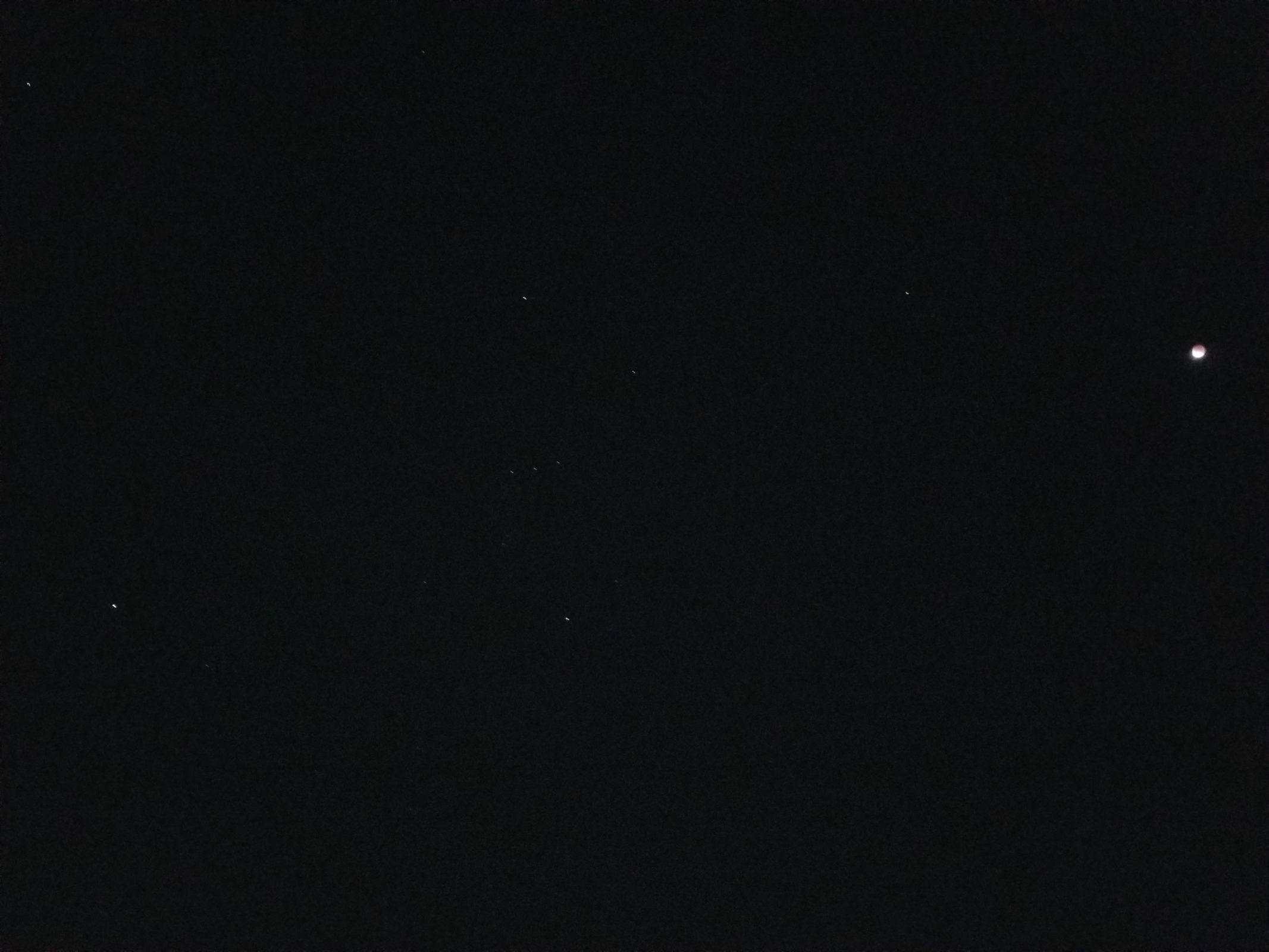The November 19 lunar eclipse was billed as a partial eclipse. According to NASA, 99.1 percent of the moon was shrouded by the earth’s umbra (the darkest shadow) during mid-eclipse, making it very close to a total lunar eclipse. It was the longest partial eclipse of the century–between 2001 and 2100–lasting 3 hours and 28 minutes, and the longest eclipse in the past 580 years, according to the Holcomb Observatory. Lunar eclipses usually last about an hour, but this time, the moon was farther from the earth, so the earth cast a wider shadow and it took the moon longer to pass through that shadow. The peak of the eclipse occurred at 3:03 a.m. our time.
Ted and I are night owls (and we’re retired), so we stayed up for the eclipse and slept in the next morning. We went outside around 2:30 a.m. to watch the peak of the eclipse and planned to go back into the house by 3:04 a.m. That’s not what happened. The sky was so beautiful, we stayed outside for over an hour. With the moon in shadow and a crystal-clear night sky, we could see far more stars than we normally do. The moon was beautiful, the stars were beautiful, and the night was perfectly calm. It was, however, only 24 degrees and we were dressed in our pj’s and bathrobes with Crocs on our feet. After an hour, we admitted that, although it was still a beautiful sight, we were getting cold, so we went back into the house.
I love looking at stars and finding constellations. With the moon darkened, the stars were unusually bright, but they weren’t bright enough to see them well in the few photos I took. Only Orion and the dog star, Sirius, were strong enough to show in the black sky. In the photo below, that’s the fully eclipsed moon on the right (my cell phone camera picked up all of the moon’s radiant light, so it looks full), and Sirius is in the left center. Orion is in the middle. A few of the stars show well; all of them are visible if you zoom in on the photo–or maybe if you look at the photo in a dark room.

In the opposite direction, we could see every star in the Big Dipper. Usually, there are at least two stars that can’t outshine the city light pollution. I don’t recall ever seeing the Big Dipper in a vertical position, but I don’t often check the night sky at 3:00 a.m. At this time of night, the handle rose directly upward from the horizon and the dipper was above it. It was easy to find the North Star to locate the Little Dipper, but even with the moon dark, I couldn’t see all seven stars in that constellation. I found Cassiopeia, but couldn’t see the Seven Sisters (aka the Pleiades), my favorite constellation. They might have been lower in the sky, behind a tree or a house.
This was a stunning lunar eclipse and a perfect night for viewing it. Theresa Massony, the author of an article I read about this eclipse wrote, “This lunar eclipse is not to be missed, unless you have time to wait a whole century for the next one.” So true! Ted and I took the time to watch this one. If we’re still around in 2100, we’ll catch that one too.